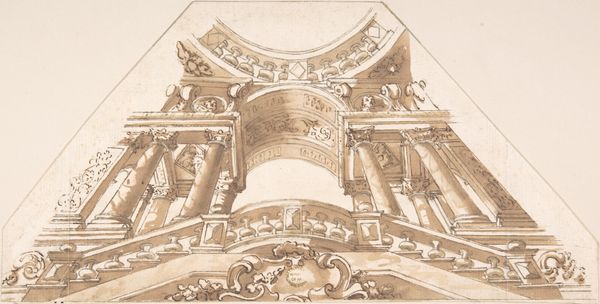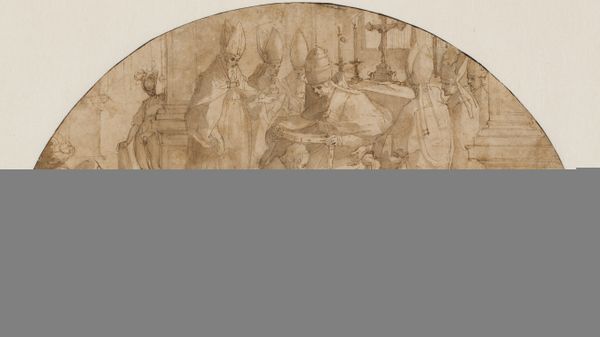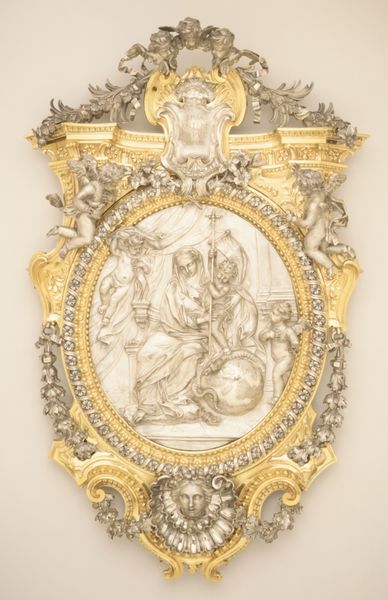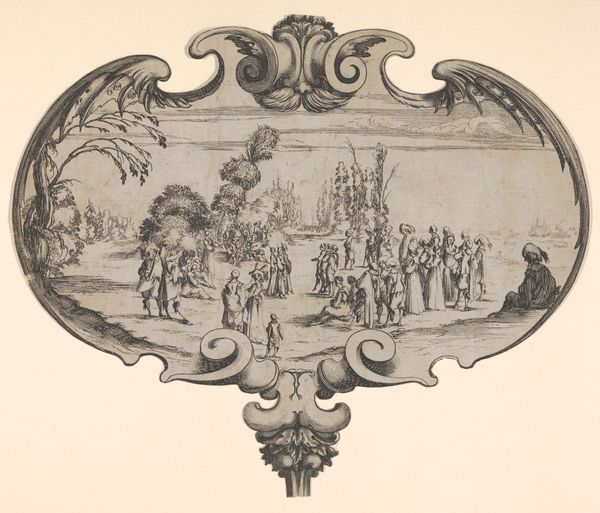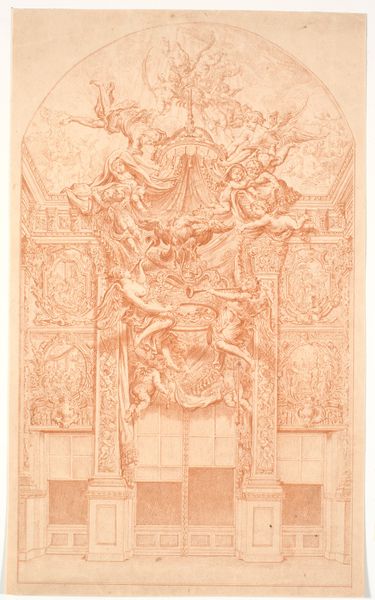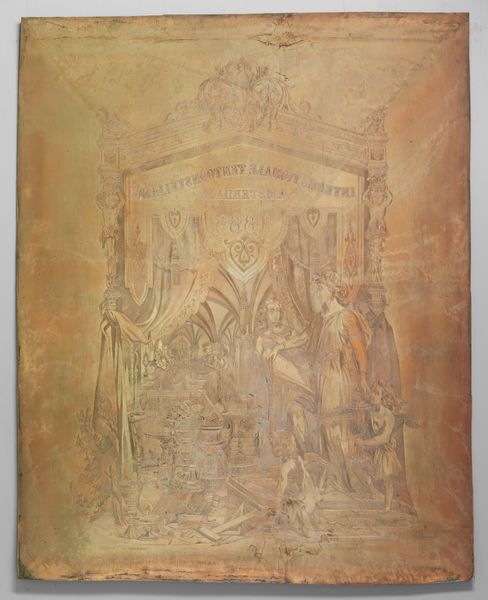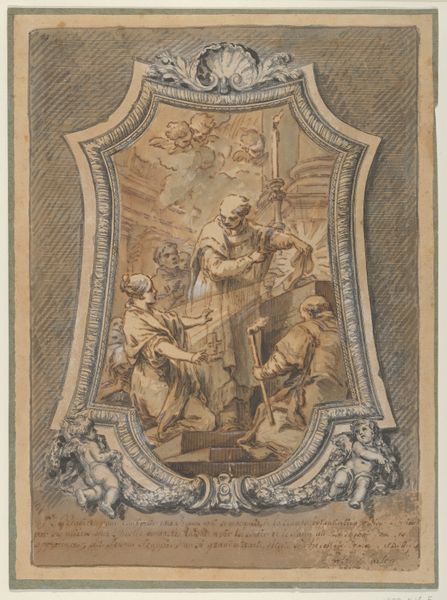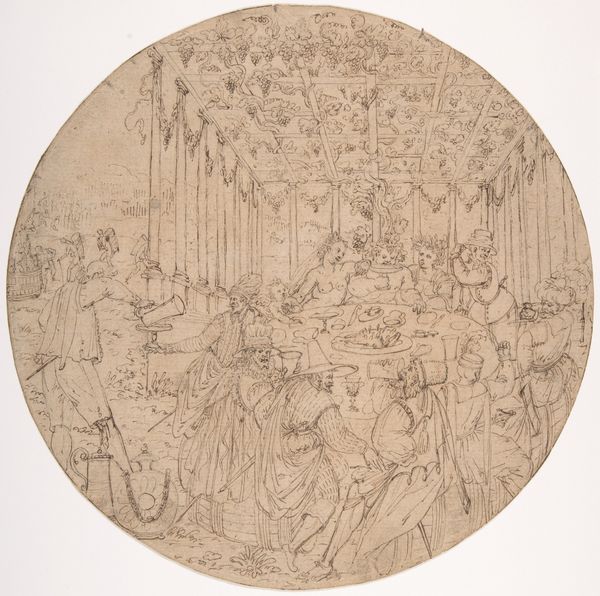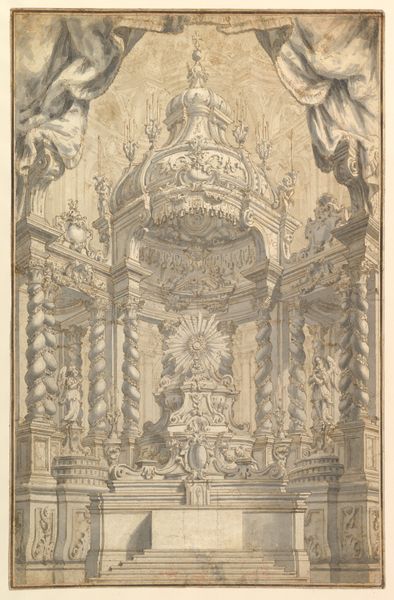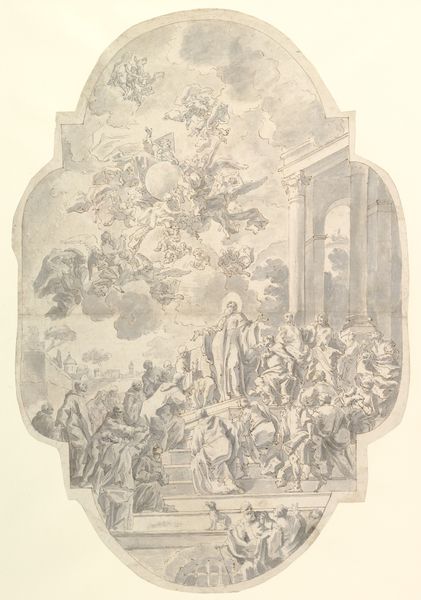
drawing, ink, pen, charcoal
drawing
baroque
perspective
charcoal drawing
figuration
ink
pen
charcoal
history-painting
Dimensions sheet: 48.2 x 36.2 cm (19 x 14 1/4 in.), trimmed to a roughly circular shape with ornamental lobes and angles image: 38 x 35.4 cm (14 15/16 x 13 15/16 in.)
Curator: Matthäus Günther's drawing, "Worshippers at the Tomb of Saint Peter," created around 1740, uses ink, charcoal, and pen to depict a bustling scene inside a grand basilica. It is a testament to the Baroque period’s embrace of drama and emotion. Editor: My initial reaction is one of slightly muted awe. The drawing style and subdued palette lend the whole scene a sense of reverence, as though we're peeking into a sacred memory. The soft tones add to the timeless feel. Curator: The scene teems with people, a social gathering inside a monument erected in honor of Saint Peter. The architectural framework, composed of columns and arches, shapes the composition, drawing the eye upward, to imply a kind of access. Editor: Look at how figures cluster in distinct groups, each lost in their private devotion or contemplation, reinforcing the image of the church as a nexus of spiritual longing, almost staged vignettes in a theater of faith. Curator: Indeed, and you’ll note that Günther produced quite a few studies precisely like this one as preparations for large ceiling frescoes, a common commission at the time for masters of his caliber. So the theatrical feeling might just be the result of that planning stage. Editor: And consider the dome in the background. It serves almost as a visual echo of the halo above, linking earthly authority with divine sanction in an iconic and enduring way. Curator: It also illustrates the power of institutions in dictating imagery of piety and, inevitably, exercising socio-cultural power by producing public expressions of religious authority. Günther himself became part of that structure. Editor: I think what I appreciate most is how the drawing uses shadow to both reveal and conceal, offering glimmers of transcendence but reminding us of the tangible weight of religious iconography and the enduring need for spiritual connection. Curator: Seeing Günther's study, even as a preparation piece, helps us to consider the layers of production in public artworks, and it helps to demystify that connection to both artistic choices, and powerful social functions. Editor: Absolutely, analyzing symbols gives insight into shared historical memory and also our recurring human desire for meaning and purpose.
Comments
No comments
Be the first to comment and join the conversation on the ultimate creative platform.
